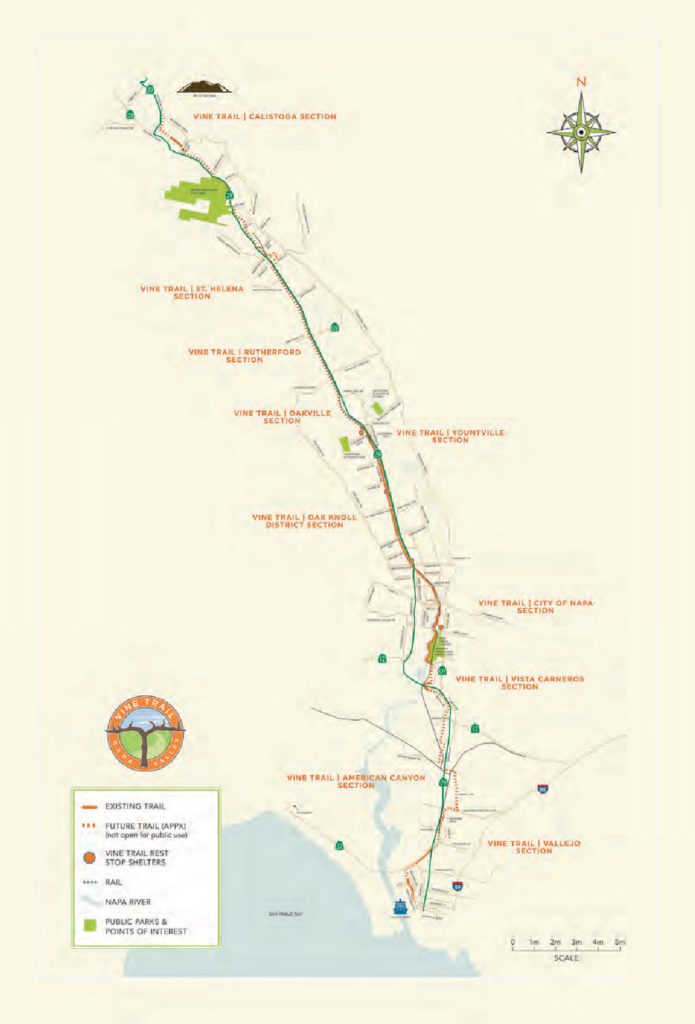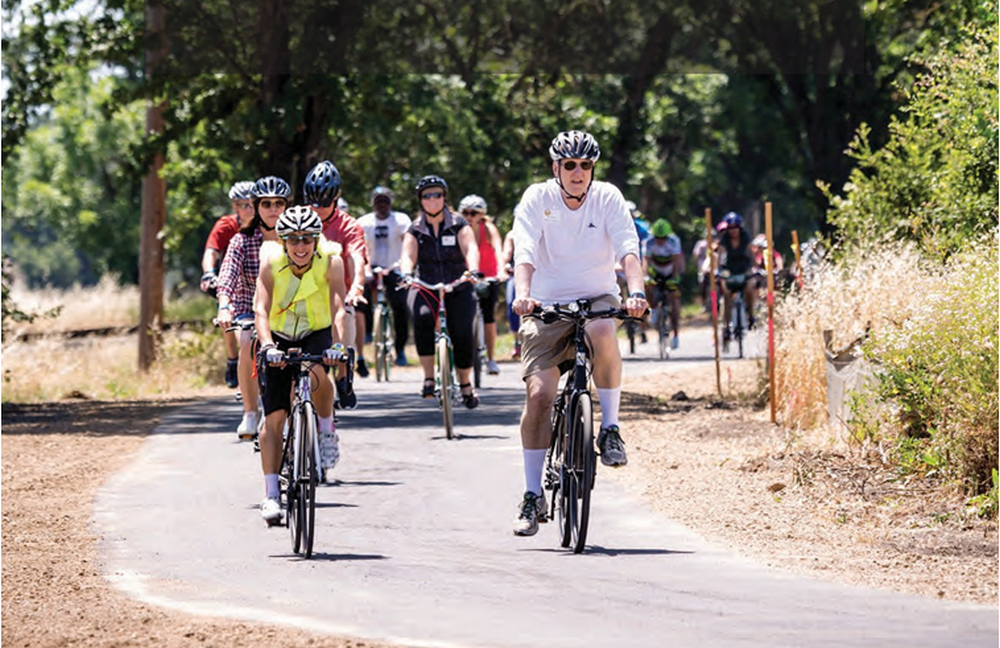Building Connections Across the Valley
Often commuters who are stuck in traffic on SR29 north of Napa see cyclists and walkers moving faster than them. This is because they are using the Napa Valley Vine Trail.
The 47-mile Napa Valley Vine Trail endeavor was launched in 2008 by the Napa Valley Vine Trail Coalition, a non-profit organization led by a diverse board of directors representing agriculture, hospitality, tourism, public safety, education, real estate, health, arts, and advocates for parks and better cycling routes. The Coalition works with thirteen public agency partners in two counties to fulfill the goal of a 47-mile shared use, cycling and walking path connecting the cities and towns in the Napa Valley. Since 2009, the Coalition has assisted its public agency partners to secure grant funds and raise private donations from organizations and individuals to fund phases of the project. Today, over nineteen miles of the Vine Trail are currently in place, with thirteen more miles scheduled for construction in 2021. Eventually, the Napa Valley Vine Trail will connect the ferry in Vallejo to the City of Calistoga.
Today, over nineteen miles of the Vine Trail are currently in place, with thirteen more miles scheduled for construction in 2021.
As commuters sit in traffic on SR29, they might contemplate the 358,000 people a year who choose to use the Vine Trail between South Napa and Yountville. A bike ride from Redwood Road in Napa to Yountville will take forty minutes, but the benefit is taking in the fresh air, getting exercise, and saving money (and stress) of car ownership. The Vine Trail’s iconic rest stop south of Darms Lane has maps, a water fountain, a bench, and a bike repair station, and through a grant from the Napa County Rotary Clubs, will be the beneficiary of further improvements.

Construction of the two new phases of the project, St. Helena to Calistoga and American Canyon to Vallejo, which are slotted to be completed by 2022, will open up even more opportunities to leave the car in the driveway and take advantage of a leisurely bike ride or stroll on the Napa Valley Vine Trail.
The Coalition is anticipating federal and state grants to pay for 75% of the $51 million price tag, and the wine and tourism industries have contributed almost $5 million towards the cause. However, the Coalition cannot complete the project without support from community members and frequent visitors to wine country, offering everyone the opportunity to help make this project a reality. Interested parties may consider joining the Vine Trail Coalition for $47 a year or can solicit assistance from their employers or businesses to buy one of the commemorative legacy metal footprints featured at one of the Vine Trail rest stops.
FOR MORE INFORMATION:
about Vine Trail membership, legacy footprints, or to subscribe to the newsletter, visit www.vinetrail.org
Article By: Philip Sales, Executive Director of The Napa Valley Vine Trail Coalition

